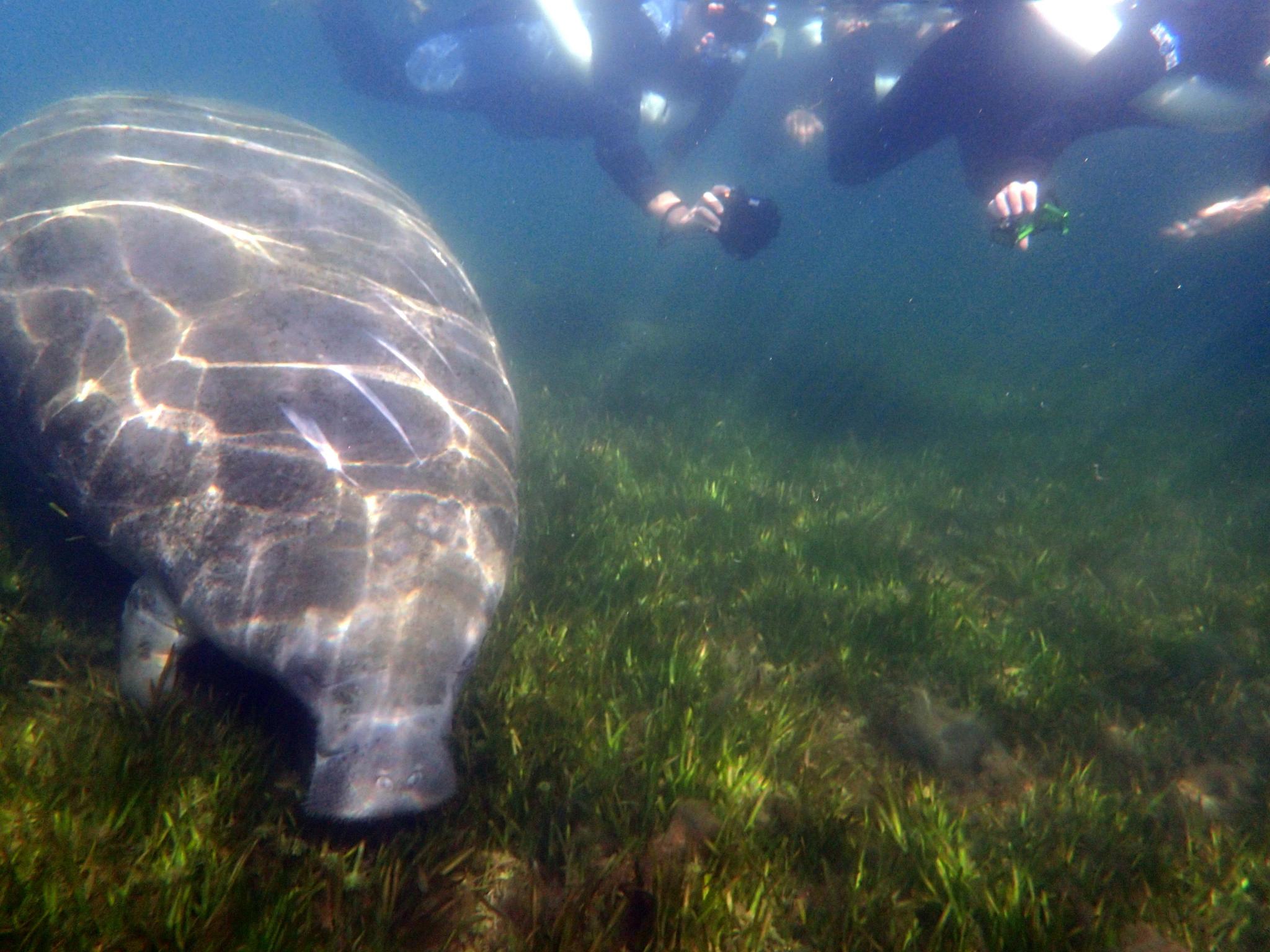
Photo from Beth Darnell
On an adventure swimming with the manatees in Florida
Thirty years ago my wife, Beth, youngest son, Tim, and nephew, Jonathon, spent a month camping in our fold out in Florida. On top of the camper we carried a 10 foot jon boat that was powered only with an electric trolling motor. A little fishing trip down the Homosassa River turned out to be one of my most thrilling outdoor experiences. As we motored slowly down the river toward the Gulf big manatees began to play around our boat.
“What are they?” asked Tim and Jon.
“They’re manatees, sometimes called sea cows,” I answered.
“Will they hurt us?”
“I hear they are harmless,” I said.
That was all it took. Both boys were instantly overboard and swimming with the manatees. They held on to the huge creatures and circled the boat. Sometimes they swam under the boat. They were laughing and having the time of their lives.
Now, fast-forward to last week. Beth and I were back in Citrus County, Florida enjoying the beautiful cities of Crystal River and Homosassa. The highlight of our stay was a “Swim with the Manatees VIP Tour” hosted by River Ventures (352-564-8687).
Most of the manatees during the summer have migrated into the warm Gulf of Mexico. The springs in Kings Bay (headwaters of the Crystal River) and the Homosassa River are home to about 1,200 manatees in the winter. Florida is home state to about 6,000 manatees so this area holds a large percentage of the total numbers. They migrate north in the Gulf to the Suwanee River to Mobile Bay and some make it all the way to Galveston, Texas. Others migrate up the east coast of Florida all the way to Chesapeake Bay. They graze the rich sea grasses of the Gulf all along their migration route. They aren’t called “sea cows” for no reason. But when the Gulf waters began to cool they head for home. The big mammals can’t handle water under 62 degrees Fahrenheit. Hundreds of the “gentle giants” then crowd into the springs to keep warm. The young stay with their mothers for 2-3 years. The migrating routes are imprinted in them for life.
But about 50 to 100 manatees stay in the Crystal River area year round. These are the guys we got to see and swim with. Our boat captain, John, and guide, Heidi, kept on telling us it wasn’t like winter.
“You could blindfold me and I could still put you on a hundred manatees in January,” said John. “But we will still see some today,”
“There’s one,” said Heidi.
The manatee was on the bottom, grazing on aquatic vegetation. Already dressed in wet suits, we pulled on our masks and snorkels and overboard we went. The manatee was not a full-grown one. Mature ones weigh about 1,000-1,200 pounds. This one looked about half that size. We had all been briefed about “passive interaction." Meaning, only if the manatee initiates touching we could respond. I could easily have touched the feeding mammal since we were so close. The manatee paid little attention to us. Just grazing, and then, surfacing to breathe about every three minutes, Once when he surfaced I was right in his face – like inches away. It was so awesome.
Later we saw a big, pregnant female that probably weighed over 2,000 pounds but too many divers were in the water and she spooked and swam away. We were not the only boat looking for manatees. It’s a very competitive business. People come from all over the world come to see and swim with the manatees. Our boat held six divers – two Texans, two from Denmark, and two from the Netherlands.
We ended the tour by snorkeling into the “Three Sisters Springs." It was so clear and beautiful. In the winter (Nov. 15 to March 31) these springs are roped off to keep swimmers and kayakers out. Hundreds of manatees will be able to rest in the 73 degree spring water without being disturbed. But these three are not the only springs. Kings Bay has over 70 springs bubbling clear, cool water into the river headwaters.
Miles Saunders, our tourist bureau host, taught us much about the manatees. Their closest relatives are not seals or walruses, but elephants. They have very similar DNA.
Also, they are not big, blubber-like mammals. Only three to five percent of their body weight is fat. They have a thick hide, a thin layer of fat, and the rest is muscle.
Their weak eyes and slow movement makes them easy targets for boat propellers. About 70 percent of all the manatees have prop scars on their backs. Cold water, red tide and boat propellers are the three real killers of manatees.
The Crystal River National Wildlife Refuge was established in 1983 to protect the manatees. It is the only National Wildlife Refuge ever established to protect a single species. And it is working. When my boys swam with these playful sea cows in 1988 there were about 1,000 manatees in all of Florida. Since the establishment of the Refuge the numbers are now over 6,000.
Let’s hope that 30 years from now we still have manatees on the increase.











